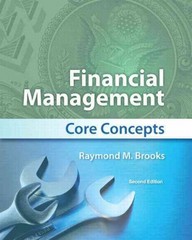Ch. 13 Post-Chapter Assignment Saved Help Save & Exit Submit Check my work 5 The financial statements for Thor and Gunnar companies are summarized here: Thor Company Gunnar Company 10 points eBook Print References Balance Sheet Cash Accounts Receivable, Net Inventory Equipment, Net Other Assets Total Assets Current Liabilities Note Payable (long-term) (124 interest rate) Common Stock (par $20) Additional Paid-in Capital Retained Earnings Total Liabilities and Stockholders' Equity Income Statement Sales Revenue Cost of Goods Sold Other Expenses Net Income Other Data Per share price at end of year Selected Data from Previous Year Accounts Receivable, Net Inventory Equipment, Net Note Payable (long-term) (12. interest rate) Total Stockholders' Equity $ 26,000 68,000 136,000 752,000 187,000 $1,169,000 $ 150,000 248,000 663,000 61.000 47,000 $1,169,000 $ 64,200 19,000 12,000 174.000 59,400 $328,600 $ 19,000 48,000 243,000 10,000 8,600 $328,600 $1,093,000 663,000 327,000 $ 103,000 $309,000 171,000 105,000 $ 33,000 $ 12.70 $ 30.00 $ 56.800 124,000 752,000 248,000 771,000 $ 18,200 36,600 174,000 48,000 261,600 un. 13 Post-naptet Assignment Help Save & ENTE Submit Check my work 5 These two companies are in the same business and state but different cities. Each company has been in operation for about 10 years. Both companies received an unqualified audit opinion on the financial statements. Thor Company wants to borrow $96,000 and Gunnar Company is asking for $27,000. The loans will be for a two-year period. Neither company issued stock in the current year. Assume the end-of-year total assets and net equipment balances approximate the year's average and all sales are on account. 10 Dons Required: Calculate the following ratios. (Use 365 days in a year. Round your intermediate calculations and final answers to 2 decimal places.) Ratio Thor Company Gunnar Company 9.42% 39.34% 10.68% 44.66% % Tests of Profitability 1. Net Profit Margin 2. Gross Proft Percentage 3. Faxed Asset Turnover 4. Return on Equity 5. Earnings per Share 6. Price/Earnings Ratio Tests of Liquidity 7. Receivables Tumover Days to Collect 8. Inventory Turnover Days to Set 9. Current Ratio Tests of Solicy: 10. Debt-to-Assets Ratio days days days days Mc








